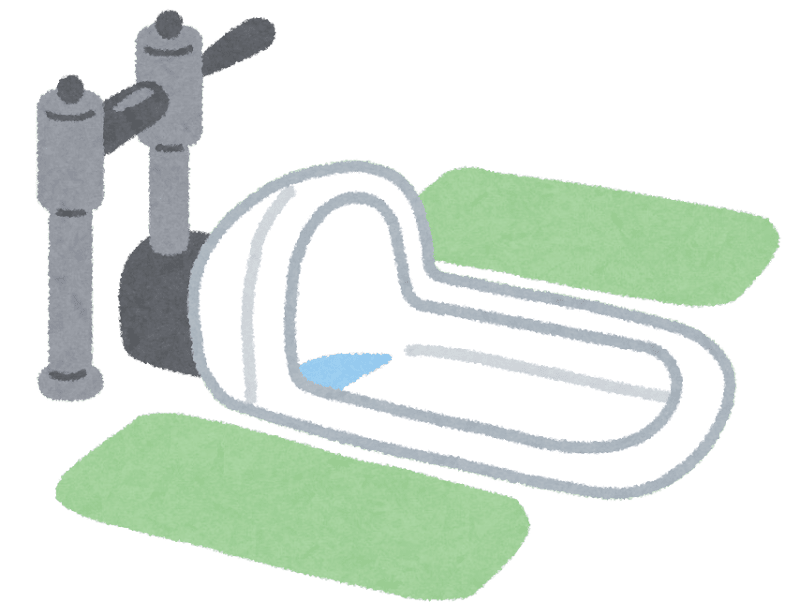When traveling around Japan, you might come across a type of toilet that looks very different from what you’re used to — the Japanese squat toilet.
It’s a traditional style that’s been used for centuries and still exists in some public places today.

Today’s topic is Japanese squat toilet!!
What Does a Japanese Squat Toilet Look Like?

A Japanese squat toilet looks kind of like a ceramic slipper built into the floor. Unlike Western toilets, there’s no seat — you simply straddle the toilet, squat down, and do your business. While it might feel a bit awkward at first, it’s a toilet design that many Japanese people used for generations.
A Brief History of the Squat Toilet in Japan

Believe it or not, Japan’s history with toilets goes all the way back to the Jomon and Yayoi periods, thousands of years ago. Some archaeological evidence suggests that squatting toilets were already in use during the mid-Jomon era, and these early forms are considered the origin of what we now call the Japanese-style toilet.
By the Yayoi period, some remains even show primitive sewer systems, meaning that designated toilet spaces were already a thing in ancient Japan!
Over time, squat toilets became the standard in Japanese homes, schools, and public spaces. But things began to change in the Meiji period (late 19th century), when Western-style toilets were introduced from Britain. After World War II, with the influence of the GHQ (General Headquarters) and rapid modernization, Western-style toilets spread quickly.

Today, most Japanese homes and public facilities use Western-style toilets, but squat toilets still exist, especially in older train stations or countryside locations.
How to Use a Squat Toilet in Japan

If you come across a squat toilet and decide to give it a try, here’s a quick how-to:
- Face the Hood: The curved side (or hooded end) is the front. You should squat facing this part.
- Straddle and Squat: Place your feet on either side, squat down, and keep your balance.
- Flush: Some toilets have foot pedals, others have a handle or automatic sensor. Don’t forget to flush!

It’s easy!
Pros of Japanese Squat Toilets

- Good Posture for Digestion: Squatting straightens your spine and allows for smoother bowel movements.
- Hygienic: You don’t touch the toilet with your skin.
- Easy to Clean: No toilet seat = less surface area to scrub.
- Low Cost: These toilets are often cheaper to install and maintain.
Cons of Japanese Squat Toilets


(shock)………
- Smell: Since the basin is shallow, odors can linger more than with Western-style toilets.
- Water Usage: Squat toilets use a lot of water — around 20 liters per flush!
- Splash Risk: The shallow design also makes splashing more likely.
- Harder for Some People: Squatting can be tough if you’re not used to it or have joint issues.
Fun Fact: What Did People Call Toilets in Old Japan?

In the past, the Japanese had many names for the toilet, such as:
- “Kawaya” (厠)
- “Setchin” (雪隠)
- “Habakari” (はばかり)
- “Chōzu” (手水)
Nowadays, you’ll hear more modern terms like:
- “Toire” (トイレ)
- “Otearai” (お手洗い)
- “Keshōshitsu” (化粧室)

I usually use the word “Otearai”.
In Summary: Should You Try a Squat Toilet in Japan?
While Japanese squat toilets are becoming less common, they’re still part of the country’s unique culture and history. Trying one can be a fun little adventure — and maybe even good for your posture!
Just remember to bring tissues, mind your balance, and enjoy the experience of going “the traditional way.”

If you are interested in Japan, you may love these games!

Yes! Let’s play!




Comments